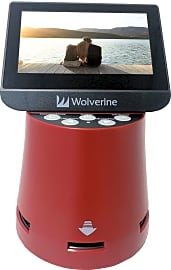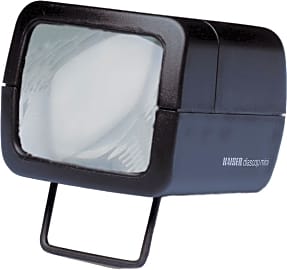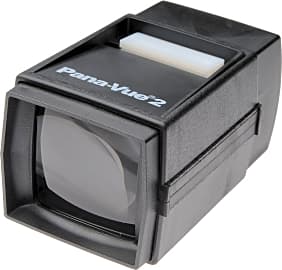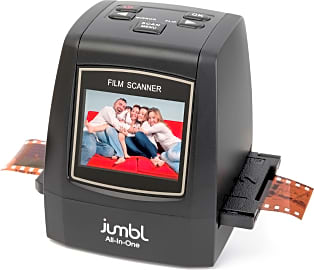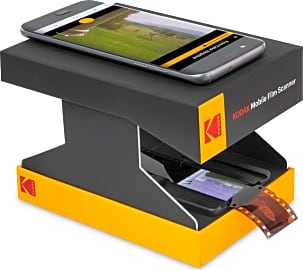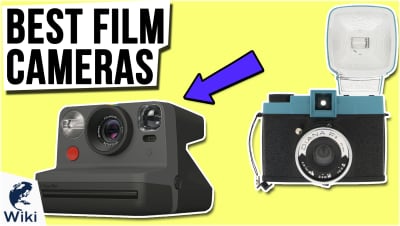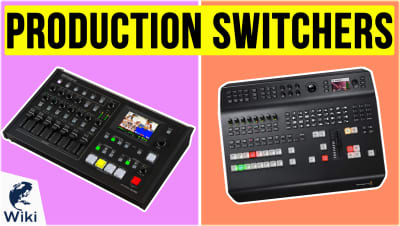The 9 Best Slide Viewers

This wiki has been updated 39 times since it was first published in October of 2015. If you've got a box full of old slides and negatives in the attic that you haven't looked at in years, you can dust them off and enjoy those family memories again with one of these handy viewers. We've included lightweight, portable models as well as fancy units that can digitize your old images, so you can share them with friends and store them on any modern device. When users buy our independently chosen editorial selections, we may earn commissions to help fund the Wiki.
Editor's Notes
January 10, 2020:
Because it offers a range of features, we still think the Kodak Scanza is a tough model to beat. It not only lets you see your old slides, but it also allows you to convert them to digital files so that they are easier to view, store, and share in the future. The Wolverine Titan is a fairly similar choice that's slightly more expensive, but it does arrive with a 32-gigabyte SD memory card, a nice touch for those who may not have one lying around. As for simpler models, we've kept the Pana-Vue 2 and The Imaging World Medalight. These are not for large archival projects; instead, they are for casual viewing, including for quickly deciding which images are worth saving and which are not. We've also changed the Kaiser Diascop Mini for the 3x magnification version, as the 2x version with the small screen is simply too small for most users. Note that most of these simple choices do not include either an adapter or AA batteries, so you'll need to provide your own.
What A Slide Viewer Can Do For You
Whatever your personal reason for needing one, a good slide viewer will let you look through that clear film and see the history, love, and creativity it captured.
When I was a kid, my sister and I inherited a pair of rudimentary slide viewers from our grandparents. They were little key chains shaped like cheerleaders’ bull horns, but squared instead of rounded. At the narrower end was a little piece of glass up to which you could put your eye. At the wider end was a small slate of translucent plastic, behind which sat a tiny piece of slide film.
The key chains each held a picture of our grandparents, one of the two of them standing in front of their house, and the other of the two of them at a fancy dinner many years before I was distant forethought. In both pictures they look, as they were always described to me, incredibly happy. My sister and I lost our grandpa when I was two and she was four, and we kept these key chains to remind us of him. When we lost our Nana some 12 years later, we still had the key chains, and the slides inside them became even more precious to us.
While there are photographers out there who still shoot with slide film (also referred to as transparency film), the vast majority of consumers interested in a slide viewer are looking for the same thing my sister and I got out of our little key chains: a connection to the past. Slides, especially when kept in the proper conditions, can keep their color and contrast consistent for years. Dropping a slide into a slide viewer allows you to step back in time and see the people and places of years gone by, often in breathtaking color and detail.
Perhaps your had a parent or grandparent who was an avid photographer in their day, and you’ve just inherited a suitcase full of slides. There could be some truly historical material in there, or even some high art. You may be an artist and photographer yourself looking to challenge yourself with slide photography, which is one of the least forgiving of poor manual exposure settings. Whatever your personal reason for needing one, a good slide viewer will let you look through that clear film and see the history, love, and creativity it captured.
How Slide Viewers Work
To understand how a slide viewer works, it helps to first understand a little bit about the transparent photograph, and about photography in general. Armed with this knowledge, you can better categorize any slide collection you have to make for optimal viewing, and you can set out to take breathtaking images of your own in the medium.
With traditional color negative film, color emulsion layers are exposed to light and leave behind negative dye patters.
With traditional color negative film, color emulsion layers are exposed to light and leave behind negative dye patters. These patterns provide a lot of flexibility to developers as they invert them to create a print, but that often makes it nearly impossible to render the exact colors of the scene as they existed in the real world. By contrast, slide film begins with a set of negative colors that, when exposed, reveal tones specific to the frequencies of light absorbed. The result is much more accurate, but the process requires that a photographer has his or her settings just right — under or overexposed slides are nearly impossible to push or pull towards proper exposure in development. Poor exposure can also result in inaccurate color readings and blown highlights if you aren’t careful.
Once a piece of slide film is developed, it shows a positive, rather than a negative picture. That means that you could hold the cell up to a light and see exactly what the camera and its shooter saw on the day it was taken. As such, the act of viewing slides took on a kind of communal aspect, as projectors became a reliable way to bore your friends and family members to tears with poorly taken photos of your vacation.
For an individual to view slides, all you really need is a light source, but a clean white light source, and the ability to magnify the slide is also crucial. Slide viewers often use bulbs or LEDs that produce a clean, white light. That way, when you look through the slide or magnify it, you won’t get any additional colorcast from a light that’s too warm or too cold. That would be the equivalent of having an improperly developed slide on your hands, and slides are all about color accuracy.
There are some slide viewers out there that work digitally, but these are for our next section.
How To Choose The Ideal Slide Viewer For You
All of the slide viewers on our list are designed to show slides to one or two people at a time. They each magnify the image enough to see a good amount of detail. If you want to share your images with more people in a given setting, you’re going to want to get your hands on a good slide projector.
They each magnify the image enough to see a good amount of detail.
The other way you can share your slides with more than a couple of people at a time brings us to the most significant dividing line among the slide viewers on our list. On one side of the line are traditional slide viewers with a bulb and a magnifying screen. On the other side of the line are slide viewers capable of doubling as slide scanners.
The traditional slide viewers on our list keep things pretty simple. They allow you to place a single slide into their chamber, on one side of which is a strong light, and on the other side of which is a screen. The size and shape of this screen bends and magnifies the light coming through your slide to create a larger version of it. If you mostly have a collection of old slides that you like to look at now and again, this is an ideal option.
Hybrid slide viewers and scanners also have bulbs that shine from the back of your slide, but the light they cast hits a digital sensor. You can see what this sensor sees in real time to view your slides in the traditional way, or you can use this sensor to capture the image digitally, transfer it to your computer, and save it forever.



